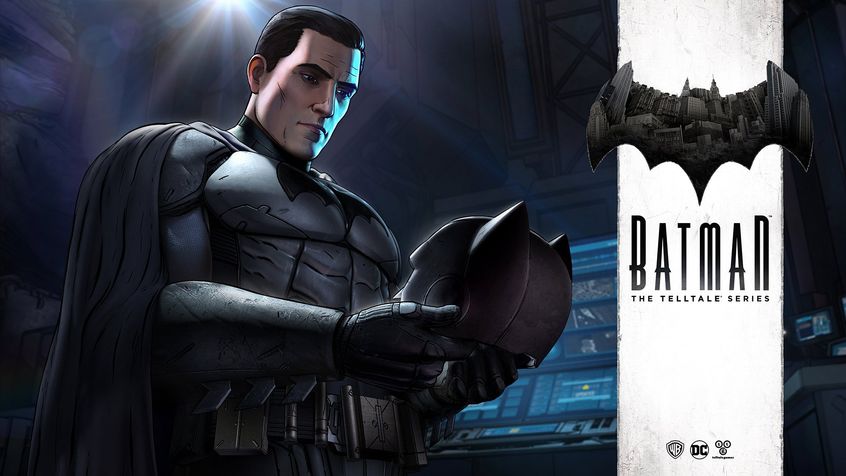Batman Telltale
This will surprise exactly no one, but I am a sucker for Telltale Games series. Though they’re more like interactive movies than a traditional game, they’re fun and engaging, and I enjoy the worlds they build and the stories they tell. They’re definitely not without their flaws, but I enjoy them and have a tendency to devour them.
In this case, I binged Batman: The Telltale Series over two days. This review may reflect that I played this all at once instead of episodically.
For background, games developed by Telltale Games are adventure games, where the player guides the main character through a series of events while lightly interacting with the world around them through controls. Most of what drives the plot comes from decision points, where the player makes a decision that shapes how the rest of the story will play out.
 Example of an extremely important decision
Example of an extremely important decision
In Batman, the story follows Batman/Bruce Wayne as he investigates the dealings of Lady Arkham and the Children of Arkham, while also navigating new revelations about his father and his family’s wealth. The player goes from event to event, helping Batman solve the mystery and save Gotham City.
It’s a very good Batman story. Telltale does an excellent job staying true to the oeuvre of Batman, especially when it comes to the dichotomy between Batman and Bruce Wayne. I really enjoyed the blurring of the line between the two and the exploration of what that meant. The exploration of traditional villains was also fantastic, and in general, it was easy to get immersed in the world and invested in the story being told.
Batman has few actual mechanics, but those that it does have, particularly for fight scenes, play beautifully into the atmosphere and look and feel of the game. Though I know Batman isn’t solely a comic book character anymore, the graphic style and design of the combat actions feed perfectly into furthering a comic book look and feel.
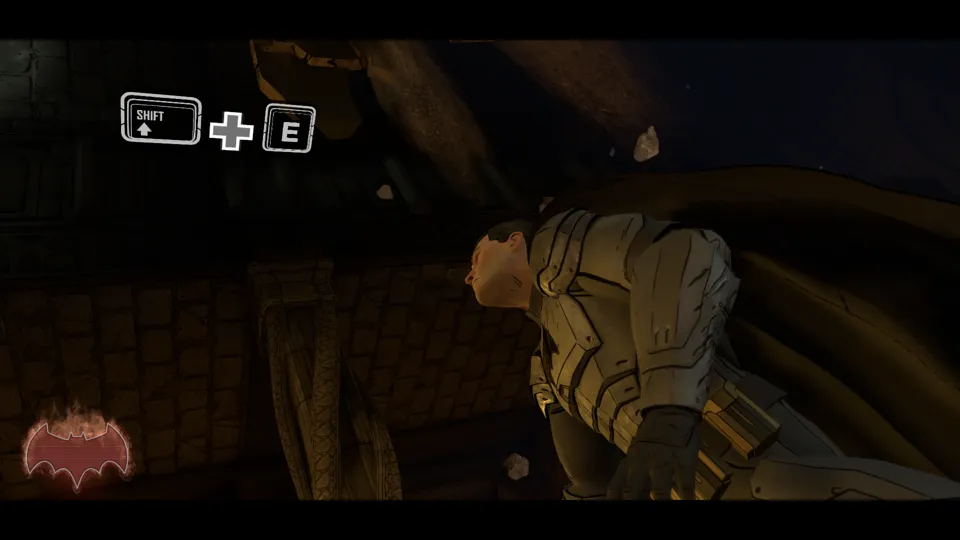 These rocks fell on my head so I could take this screenshot. You’re welcome.
These rocks fell on my head so I could take this screenshot. You’re welcome.
With very few game mechanics, what really carries a game by Telltale is its atmosphere and story. I think I’ve said enough about how much I like the atmosphere on this one, but what about the story? How well does this story actually work?
As games go, it’s a pretty good story. It has the same fun Batman feel I would expect of heroes, villains, and dastardly deeds. However, there are multiple points that are jolting in their oddness that they bring the rest of the story into question.
Spoilers ahead, so if you don’t want spoilers, skip to the end.
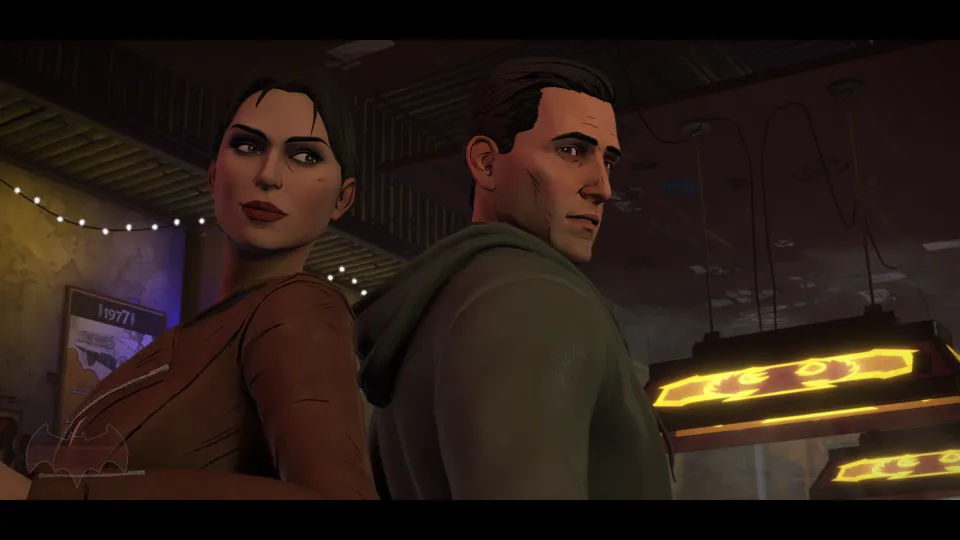 This moment is cool, and I can’t be convinced otherwise.
This moment is cool, and I can’t be convinced otherwise.
A large part of the plot hinges on the idea of social revolution and that the rich and powerful of Gotham have thrived at the expense of everyone else for far too long. The Wayne family, especially, is guilty of hideous crimes against individuals and the city as a whole. It’s a compelling story, and Bruce Wayne navigating his way through cries for his overthrow is interesting…to a point.
The trouble with the story is that we know from the outset how it ends. Bruce Wayne will always win because he is Bruce Wayne. However compelling Penguin and Lady Arkham’s arguments are about social order and revolution, I know there are no choices I could make that lead to actual social change. I’ve discussed choice a lot in this series, but this is another point where the hollowness of choice shows through. My choices do shape the cosmetics of the world and the availability of certain paths, but I don’t have an option to donate all of Wayne’s wealth to a homeless shelter and check myself into a hospital.
Ordinarily, this isn’t a problem. I don’t expect a game to cater to my every whim. However, when the villains’ arguments about why what Wayne represents is reprehensible, and when his family’s actions that have put him on this pedestal are so reprehensible, I find myself sympathising more with the villains and wanting their plan to succeed. I agree with Penguin that Wayne needs to be deposed. I agree with Lady Arkham that the shadiness of Wayne Enterprises needs to be brought to the light. I agree that fundamental change is needed in Gotham if anything is going to change, but I know that me thinking that doesn’t actually get anywhere. As much as the game advertises player choice, there are still set tracks, and there is no deviation within them.
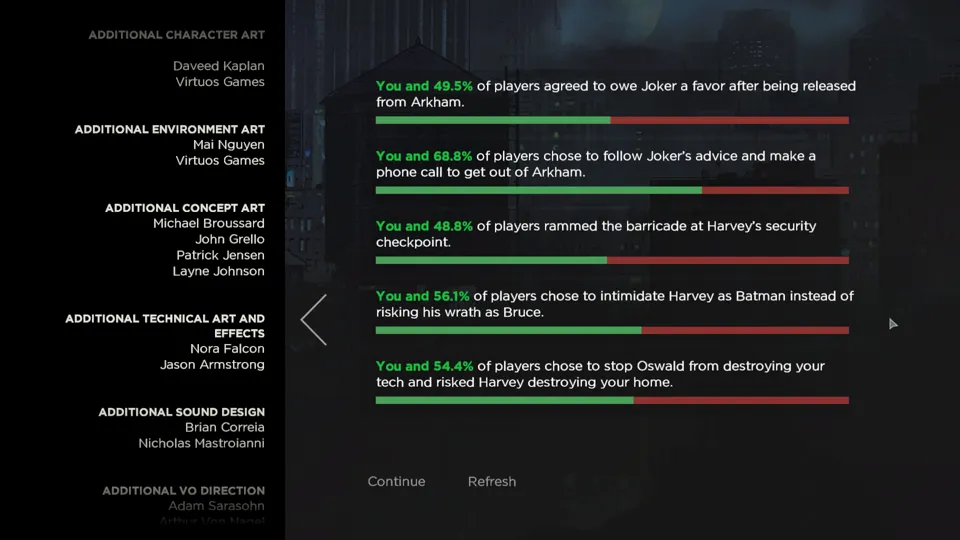 There are many stops here, but ultimately the route goes through all of them, however it chooses to get there.
There are many stops here, but ultimately the route goes through all of them, however it chooses to get there.
There’s ultimately a hollowness to Batman: The Telltale Series. It’s good fun throughout, and I have no regrets, but especially playing it in 2021, where the status quo is being questioned all around me, the idea that Bruce should keep his billions once it’s clear how it’s obtained is off-putting at best. The game emphasises the ability to take responsibility for the past, but responsibility without consequences or some form of restorative justice doesn’t much feel like responsibility - it feels like a shiny veneer on an ugly truth.
And then there’s the child abuse.
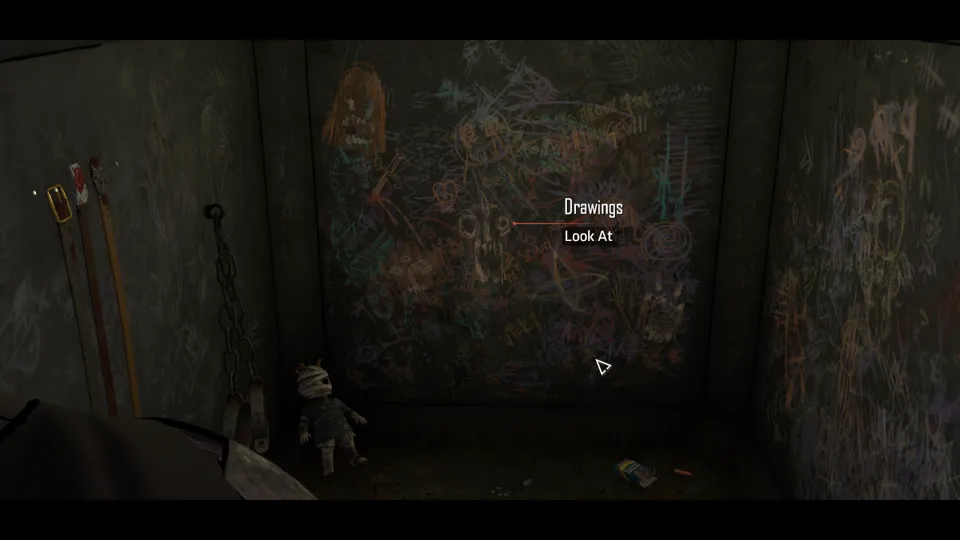 A screenshot from Batman Telltale
A screenshot from Batman Telltale
Throughout the game, there are occasional moments of incredible violence. I chalk it up to the game wanting to be an adult game, and much of it fits in with the plot, albeit in an a borderline unnecessarily gruesome way.
That changes with the last act, and the decision to fill in Lady Arkham’s backstory by justifying her actions as the actions of a child who endured years of torture.
There are multiple points here. Adding in child abuse as a final act addition feels less like fleshing out a character, and much more like adding in further horrific violence, just for the sake of having that violence. Batman as a series already has a nasty habit of having female characters suffer horrors for the sake of a male character’s development. Adding in child abuse to Lady Arkham for the sake of Batman investigating a further locale is cheap and tells more about the writers’ priorities than Lady Arkham’s. It sours the entire experience.
This is not to say a tragic backstory isn’t possible. However, compare the backstories of Penguin and Two-Face to Lady Arkham, and the difference is abundantly clear. Penguin and Two-Face are allowed to be villains because they choose to be villains. They become villains with their humanity fundamentally intact. Lady Arkham is a villain because she had villainy forced upon her by trauma and abuse. This choice matters, as it defines not only the character, but the game’s entire approach to telling its story.
There’s an irony to a game so focused on player choice stripping that choice away from one of its central characters.
All of this is to say that I have mixed feelings about the game. I had a great time playing it, and I think playing it all in two sessions was the best way to do it. However, the more I look back on it, the more I see that leaves me a little sceptical. I still recommend it - after all, it’s lots of fun if this is your genre - but I ask that you keep a sceptical eye on what you’re doing - and what you’re not.
Developer: Telltale Games
Genre: Graphic Adventure
Year: 2016
Country: United States
Language: English
Play Time: 9 Hours
